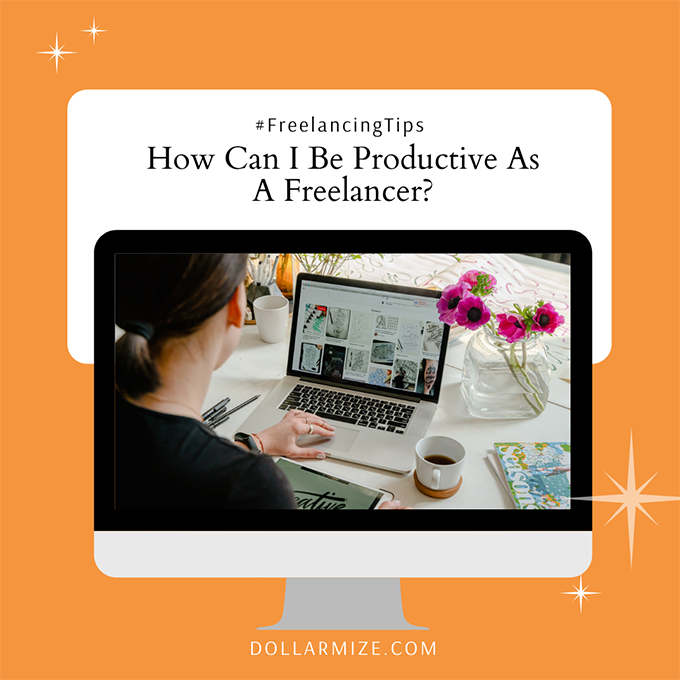Have you been sending your freelance portfolio and proposals left and right to clients that don’t even give you a response? Ever wonder how you could make them bat an eye towards you?
Through a freelance solid portfolio, you can make them notice you and win them over! An impactful portfolio is one thing that all highly paid freelancers have in common. Some even say it’s their golden ticket to landing lucrative projects.
In today’s job-hunting market, there are tons of opportunities. And along with it is tons of competition as well. Especially during this pandemic, where many employees have been laid off from their jobs. More people want to offer their professional services as independent contractors rather than seeking opportunities to get back to the ranks of having a 9-5 hustle.
Should the competition not bother you if you truly have the talent? In the ideal world…Yes, it should not. But, we are living in a highly competitive society. And it is expensive to shrug off having your portfolio for freelancing. You may lose your shot at doing actual work and getting paid without tangible proof. So, considering that time is money – you will be losing money. But don’t panic yet! You can still win the competition and convince clients that you are the right person for the job.
Here are 10 elements that can help you make the best freelance portfolio. You can effectively showcase your skills and create a portfolio that converts.
Establish and promote your expertise

Do not make the clients guess. You must concretely identify your proficiencies. Be as specific and convincing as you can be. What is your expertise? What is your niche? What tools are you capable of navigating? In your professional career, what are you seeking to achieve?
With so many fellow freelancers and agencies to compete with, you must actively advertise yourself! Distinguish yourself from your peers. Build a profile that promotes what you can bring to the table. You must tailor what you highlight to the exact needs of the client and the project that you are pitching for.
Highlight information about your education
Featuring your professional credentials is important. These include your formal education – such as your bachelor’s degree, master’s degree, and so on. You can also include your academic awards, training, and certifications.
However, having a good educational background will not guarantee landing a project. You also need to have the skills to match with it. To support your qualifications and competence, having hands-on experience is equally important.
Share samples of your work
Tell a story about your freelancing journey. Give your clients a brief walkthrough of your work experiences. Highlight your previous projects. Include your achievements, techniques, strategies, and any noteworthy information. Emphasize the ones that are most suited to the kind of projects that you are trying to win. But before you do that, be sure to have consent. You must seek permission from your former clients. Only feature the relevant details once you have a signal from them.
Sometimes, you won’t get approval to publish confidential details of your work. And that’s okay because there are other ways to get samples. You can make a few of your own since samples do not necessarily need to come from past employment or paid freelancing deals. Put your best foot forward, plus be as detailed and meticulous as possible.
You can make graphics with many styles and varied designs as a graphic designer. If you are a website developer, you can create a site. One that showcases your skills in website design and strategic page layouts. If you are a copywriter, you can create a blog. You can publish articles written through different types of writing for various purposes. And the list goes on.
Include client testimonials and endorsements
By adding social proof, you will increase the value of your proposal. Positive testimonials and endorsements from clients who have experienced working with you will foster an environment of trust, credibility, and confidence.
This will establish your expertise in the field and give strength to how clients will interpret your working attitude and character as a freelancer.
Attach a professional cover photo
Your cover photo is crucial for your personal brand. It is an influential factor that defines impressions. And to win clients, you must ensure you are making the best impression possible. Your photo helps you shape your reputation. So, you must make sure that your image is professional and respectable. You should keep it formal because it reflects your appearance, behavior, and character.
While it could be enticing to add a picture of you during an adventure or while traveling, note that your portfolio is not the right platform. Do not let an informal snapshot give you a possible setback.
It is ideal to have your photo professionally taken. But since we are in a pandemic, you can opt for a DIY pictorial.
Make it easy for clients to contact you
Add your contact details and provide many options for them to connect with you. The easier they can reach you, the better, and the faster you can reply.
Typical contact details to add are your work phone number and your email address. Plus, any instant messaging software such as Skype, Viber, WhatsApp, or Facebook Messenger. If you have a physical office, you can include your address and a map to help them locate you. You should also mention your weekly availability, preferred working hours, and time zone. This helps set expectations straight.
Add a winning call to action (CTA)
Why do you have to include a call to action? Because it encourages clients to take the desired steps you want them to perform. Since creating your freelance portfolio is to convince clients to hire you as an independent contractor, it is best to lead them toward doing so.
Be careful not to sound demanding in any way, though. The ideal way to deliver a call to action is to put in place an implied CTA. Rather than carrying out a direct one.
Make your freelancer portfolio pleasing to the eyes

A plain and boring portfolio does not always work out well. Aim to make yours creative and informative at the same time. Choose smart color schemes and steer away from overwhelming shades and difficult fonts.
Have you ever tried looking through articles with hard-to-read fonts? And colors that are so bright that it hurts the eyes? Did you ignore the page because it was too inconvenient for you? It will be the same for your clients. If your portfolio will be too much of a hassle, they will ignore it, too. And you don’t want them to stop reading, do you? So, choose good tones plus a fair-sized font that is formal and clear.
Build a powerful digital profile
A 2020 survey shows that 98% of employees use social media to gather information about job candidates. So, whether you like it or not, social platforms play a huge role in hiring. You don’t have to present yourself as a guru or an influencer. You just need to curate a social account dedicated to your professional objectives.
You can build a LinkedIn profile, a Facebook business page, an Instagram page, etc.. There is also no need to be present on all the social platforms. You can choose the ones that will suit your objectives the most.
A well-maintained social profile will help you win clients. Some have built powerful social pages. So strong that they don’t even need to send out applications anymore. Their online presence is so powerful that clients are the ones who reach out to them.
Keep your freelance portfolio up-to-date
You don’t want clients to think that your portfolio is obsolete. You must keep it up to date. Continue to add work samples, achievements, and certifications. Include details that you think are relevant to the opportunity you want.
While showcasing all your previous work is tempting, you should not. It will only do you more harm than good. As you venture further in your freelancing journey, you will be able to sharpen your skills. You will also outgrow old projects. And so, you must discard old work samples that no longer serve their relevance to make room for better ones.
Conclusion
If you are good at what you do but can’t convince clients that you are amongst the best. Then, how can you get projects, let alone get high-paying clients? Once you can prove your worth, you will be in a much better position. You can be able to negotiate your rates. As well as choose deals that will complement and benefit your business.
It is not enough to declare that you are an expert; you must show it to them. You should make a convincing freelance portfolio that represents your personal brand. Then, add digital proof to support your claims. You must have definitive proof displayed all over your profile. In that way, you can establish your capabilities and show confidence.
Are you self-employed but don’t have a portfolio yet? It’s about time for you to join the bandwagon! Let this serve as your guide on how to make a freelance portfolio that converts. Regardless of your expertise and niche.
Hope this helps! If you want more articles about getting clients, you should check out our blog, which shares tips on how freelancers can get clients online. Happy Freelancing!
Mau Enricoso
Mau Enricoso is a writer, SEO strategist and SMM manager. She supports businesses by boosting their authority on digital platforms and the search engine results page.




